07 Night / 08 Days
Please Note: – We have mentioned few places which you may pick and choose. As per your liking we will take you these places depending upon the time available.
Day 1: Bangalore – Mysore
On arrive at Bangalore Railway Station our representative will receive you and proceed to Mysore; on arrival, check in at the hotel. After freshening up and lunch, sight-seeing tour of Mysore.
St. Philomena’s Church: Also known as St. Joseph’s Cathedral, it was constructed in 1936. It is one of the major tourist attractions and is dedicated to Philomena, a third century saint from Greece. It is also one of the tallest churches in Asia.


Initially, around 1840, it was a small church, set up on land given by Maharaja Krishna raja Wodeyar III. Later, Krishna raja Wodeyar IV built the new larger church. The structure was designed by a French architect and later redesigned. It boasts of a striking Gothic structure, similar to St. Cathedral in New York and Cologne Cathedral in Germany. The main attractions are its twin towers, which stand up to 175 ft.
Brindavan Gardens: One of the prime attractions of the city, the gardens, located 21 km from town, were established by Sir Mirza Ismail, earlier Dewan of Mysore. The design is a replica of the well-known Shalimar Gardens of Kashmir, which are done up in Mughal style; boasting of fountains, parterres, terraces, water channels, water chutes, trees and floral beds.
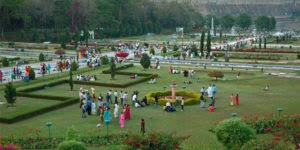
Work on laying them started in 1927 and was completed in 1932. The gardens spread out in three terraces, giving them a horseshoe shape. Colorful bougainvilleas and other ornamental plants make the slopes extremely beautiful. Musical fountains with colorful lighting add to the charm.

Timings – 6.30 AM – 9.00 PM (Monday-Friday)
6.00 PM – 9.00 PM (Saturday and Sunday)
Musical Fountain Timings – 6.30 PM – 7.30 PM (Monday-Friday)
Overnight stay at Mysore
Day 2: Mysore
After breakfast, the group will visit the following places in Mysore as per your interest and availability of time:
Maharaja’s Palace: Also known as Amba Vilas Palace, it is the most prominent tourist destination of Mysore that attracts millions of visitors each year. This historical palace, housed within the Old Fort, facing the Chamunda Hills, stands as the official residence of the Wodeyar dynasty, who ruled Mysore from 1399 to 1950. Displaying an Indo-Saracenic style of architecture, this sprawling building is a replacement of the old wooden one destroyed by fire in the 19th century. Commissioned by Krishnarajendra Wodeyar IV, the building comprises two durbar halls, a number of colossal courtyards, structures and strikingly beautiful gardens that speak volumes of the splendour of the Wodeyars.
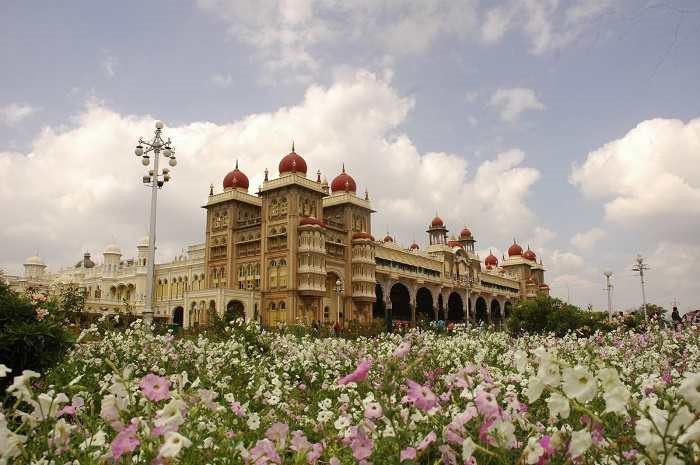
One can visit the Mysore Palace on any day from 10:00 am to 5:30 pm. Entry charge is Rs. 40 for adults, Rs. 20 for students (between 10 to 18 years of age) and Rs. 200 for foreign nationals. Battery-operated vehicles have been introduced by the management to facilitate a tour of the building that is marked as one of the largest Indian palaces and counted among the most famous tourist destinations of India after the TajMahal.
Sound & Light Show: A ‘sound and light’ show is conducted on all days except Sundays and public holidays, from 7:00 pm to 7:40 pm. Entry charge is Rs. 40 for adults and Rs. 200 for foreign nationals. The palace remains illuminated from 7.00 pm to 7.45 pm on Sundays, state festivals and national holidays and on other days from 7.40 pm to 7.45 pm, following the sound and light show. Visiting hours: 10:00 am to 5:30 pm
Chamundi Hills: Located 13 km east of Mysore, the average elevation is 1,000 metres (3,300 ft).
Chamundeshwari Temple: Patronised for centuries by Mysore rulers, Chamundeshwari Temple is located atop the Chamundi Hills. It was renovated during the time of Krishnaraja Wodeyar III (1827).

Chamundeshwari Temple is located on the top of Chamundi Hills about 13 km from the city. The temple was named after goddess Chamundeshwari or Durga, the fierce form of Shakti, held in reverence for centuries by Mysore Maharajas. The main hill itself features an ancient stone stairway of 1008 steps leading to its summit. Approximately halfway is the statue of the bull Nandi. A key feature is the statue of Mahishasura bearing a sword in his right hand and a cobra in his left. Within the temple’s sanctum stands a sculpted depiction of Chamundeshwari. She is seated with her right heel pressed against the lowest of the seven chakras. This cross-legged yogic posture echoes the posture of Lord Shiva. Worshipers believe that this posture, if mastered, provides an added dimensional view of the universe. Since the early days of the state Maharajahs, the idol of the goddess has been carried on a decorated elephant as part of the celebrations in the annual Dussehra festival.
Nandi the Bull: The giant figure of Nandi the bull, Shiva’s mount, located on top of Chamundi hills, is more than 350 years old, and is one of the oldest icons of Mysore. According to Hindu mythology, Nandi is the mount of Shiva. About 16 feet in height, this Nandi is the third largest in India. The creation of this colossal image is attributed to Dodda Devaraja Wodeyar (1659–1673), one of the illustrious Maharajas of Mysore.

The image of Nandi was carved out of a boulder in situ, single piece of black granite. One can see similar boulders at the site. Behind the image is small cave temple, under an overhanging boulder, dedicated to Shiva. Nandi is portrayed in sitting position with its left foreleg folded, as if about to get up. While the image is in great proportion, the finer details are equally brilliant. One can also see sequences of bells and garlands dexterously carved over the bull, its ears raised in rapt attention.
Jaganmohan Palace: A magnificent palace, adding to the royal grandeur of this city of palaces. An apt example of architectural brilliance, it holds immense historical prominence as well. Over 150 years old, the palace was constructed in 1861, during the reign of KrishnarajaWodeyar III. One of the oldest buildings of Mysore, it was the residence of the Royal family after the old Mysore palace burnt down during the wedding of Chamaraja Wodeyar’s eldest daughter. It is now converted into an art gallery and function hall. It is one of the seven palaces of the city and one of the most beautiful contributions of the Wodeyar kings

The palace has witnessed many important events: it was used for holding daily durbars. The coronation of Krishnaraja Wodeyar IV took place here in 1902. It was here that the very first session of the Legislative Council of Mysore was held in 1907. Few of the earlier state university convocations also used to be conducted at the palace hall. Even today, various cultural programmes and conferences are hosted in the grand hall, especially during the Dussehra festival. The hall has been designed and decorated aesthetically with intricate carvings of the ten incarnations of Vishnu, on its two wooden doors. (Timings: 10 am to 05.30 pm)
Jaganmohan Palace Architecture: Built in traditional Hindu style, the palace has three stories. In 1900, an external facade with a hall was added. This facade has three entrances and the entablature has religious motifs and miniature temples crafted. The interior walls are painted with murals which follow the traditional style of the Mysore school of painting, depicting Dussehra. The canvas depicting the sequence of the Jumboo Savari stretches across three walls. The mural is the earliest known picture of the festival and has been painted using vegetable dyes. A family tree of the Wodeyars, tracing the lineage of the royal family, is also painted on a wall. The main door has exquisite carvings of Dashavatara on both sides, in form of the ten incarnations of Vishnu.
Jayachamarajendra Art Gallery – During the rule of KrishnarajaWodeyar IV, this palace with three stories was converted into an art gallery, and renamed Jayachamarajendra Art Gallery. The gallery displays an immensely rich collection, presenting a peek into the world of royals and bygone eras, still radiating the grandeur of the past.
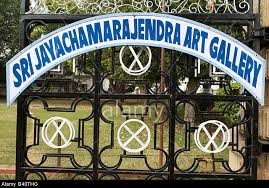
One of the best in the South India, it presents the opportunity to get a closer look at paintings by many renowned artists. Jayachamarajendra Art Gallery also boasts of a rare collection of Rembrandts, as well as works of great global artists such as Aless Caddy, Nikolai Roerich, P.P. Ruben, Titan, Jiladin Ville; along with Gunoy’s miniature paintings. It also contains masterpieces by several great Indian artists.
The gallery displays more than 2000 valuable paintings, each of them a masterpiece in itself. Various styles of paintings such as Mysore, Shantiniketan, Mughal period, western etc. are displayed. It also has a rich collection of exquisite artefacts which were an essential part of royal life. Various antique pieces such as weapons, coins, currencies, brassware, ceramics, French musical clock, furniture are also displayed. A wide variety of sculptures, sandalwood carvings, ivory carvings, mementos etc. are put up as well.
Traditional gold leaf paintings, dating back to 1875, from the Mysore, Bengal and European schools are also present. There are displays of paintings on rice grain that can be seen through a magnifying glass. ‘Lady with the Lamp’ by Haldankar is another major attraction. It has been displayed separately in a dark room and done to show how the glow of a lamp shedding light on a woman’s face.
Entry fee: Rs 20 for adults, Rs 10 for children
Overnight Stay at Mysore
Day 3: Mysore – Hassan
After breakfast, check-out and proceed to Hassan. On arrival, check into the hotel. After lunch, sight-seeing in Hassan.
Hoysala Temples: Nageshwara and Channakeshava, the twin temples built at edge of the Mosale village depict the Hoysala style of architecture. These structures are famous for their intricately designed architecture and scriptures.

The Hoysala architectural style reveals a slight Indo-Aryan influence, while the impact of the Southern Indian style is more distinct. The architecture is classified as part of the Karnata Dravida tradition, a trend within Dravidian architecture in the Deccan that is distinct from the Tamilian style.
Shri Ranganatha Temple: The temple is built on Mavinakerre hill on the way from Hassan. It consists of a Hanuman statue and has contemporary architecture. The drive is pleasing, surrounded by beautiful scenery.
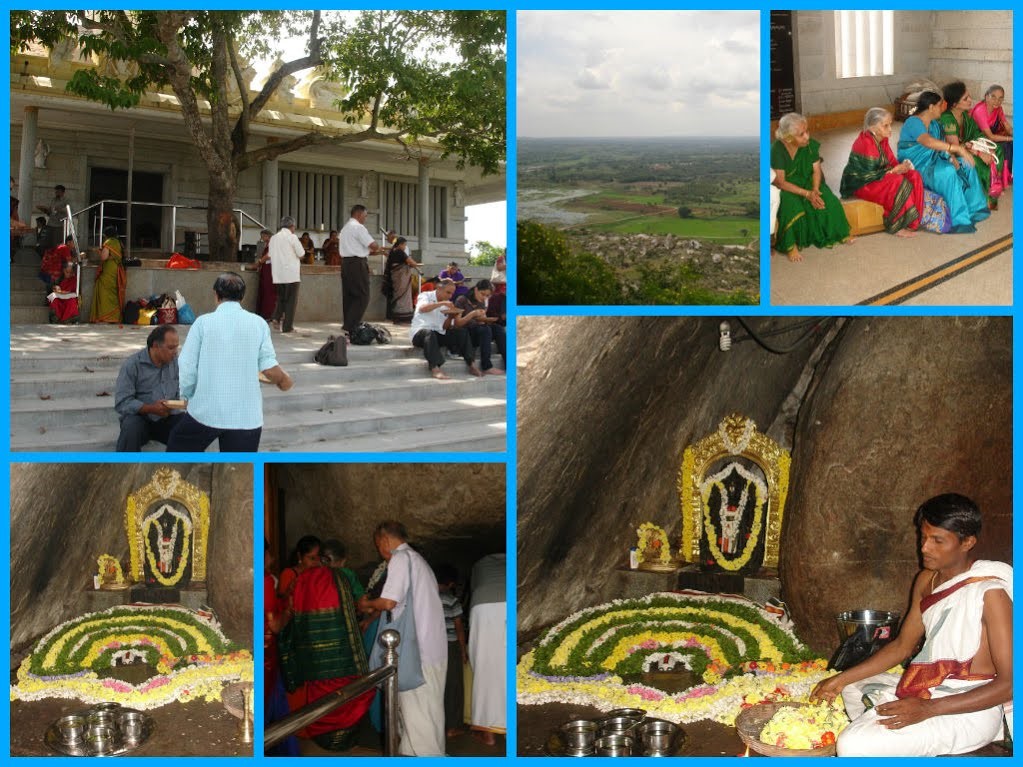
Gorur Dam: The Gorur dam forms the Hemavathi reservoir, built across the Hemavathi River. It is named after the famous Kanada literature personality, Gorur Ramaswamy Iyengar; and is 58 meters high and 4692 meters long, impounding a reservoir of 8502 hectares. The dam Gardens and Gorur temple also attract visitors. Permission needs to be sought from the authorities to go on top to see the reservoir.
Overnight stay at Hassan
Day 4: Hassan – Belur – Hospet
After breakfast, drive to Belur. On reaching, visit the following places:
Halmidi: Halmidi is a small village near Belur, best known as the place where the oldest known inscription, exclusively in Kannada language, was discovered. It consists of sixteen lines carved on a sandstone slab, dating back to 450 AD, showing that Kannada was used as a language of administration at that time. It is learned that this inscription belongs to the Kadamba period and provides details about land gifted to a soldier for being instrumental in victory over the Pallavas. The government has built a ‘mandap’ to house a fibre glass replica of the original inscription.

Chennakesava Temple / Belur Temple: The Chennakesava Temple (also known as Vijayanarayana temple) is the main attraction of Belur. Commissioned by King Vishnuvardhana in 1117 CE, it was built over three generations and took 103 years to finish. It was repeatedly damaged and plundered during wars, repeatedly rebuilt and repaired.

The Vaishnava temple is remarkable for its architecture, sculptures, reliefs, friezes; as well its iconography, inscriptions and history. The artwork depicts scenes of secular life in the 12th century, dancers and musicians; as well as a pictorial narration of Hindu texts like the Ramayana, Mahabharata and Puranas . It includes several themes from Shaivism and Shaktism, as well as images of a Jina from Jainism and the Buddha. The temple is a testimony to the artistic, cultural and theological perspectives in 12th century South India and the Hoysala Empire rule. It is also listed as a UNESCO World Heritage Site.
Timings – 7.30 AM to 6.30 PM,
Entry Fee: Free, Rs. 30 for Camera & Rs. 50 for car parking
Later, drive to Chikmagalur for sightiseeing.
Jhari Falls/Buttermilk Falls: Jhari Waterfalls, also known as Buttermilk Falls, are a beautiful waterfall situated near Attigundi in Chikmagalur district. It is one of the best sight-seeing spots for tourists. Situated on the way to Baba Budangiri, it is surrounded by dense forests and coffee plantations. The falls are created by springs generated in the mountains. A pool is formed by below, which allows visitors to swim and play in the water.
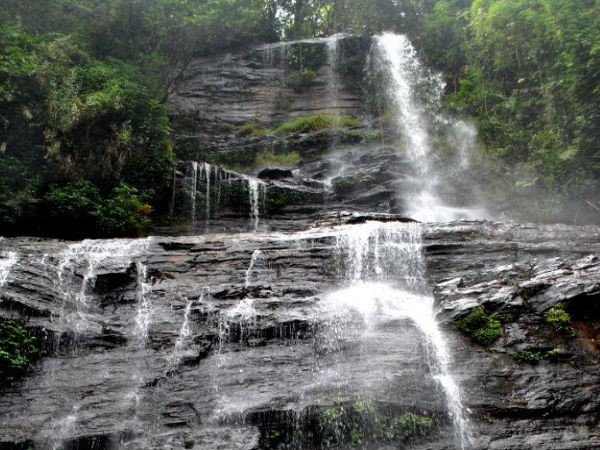
The falls are located on a steep and rugged road going down through private coffee plantations from the parking, which is about 4 km from the falls. Visitors cannot take their vehicles due to bad road conditions. One must take a Jeep ride down the hill, which costs about Rs. 600 per vehicle (capacity 6 persons, price may fluctuate over time). The falls are at their best in the monsoon and post-monsoon seasons. The ideal time to visit is from August to January while the peak season is from September to December. Timings: 8 AM – 5 PM
Kavikal Gandi View Point: Also known as Horse Shoe Viewpoint, this is a popular spot on a hilltop in Chikmagalur district. There is a small idol of Hanuman at the foot of the hill. On the top, there is a recently drawn painting of Swami Vivekananda. It is always windy and pleasant on the hill. From here, one can get a breathtaking view of the Chandra Drona mountain range. The view point can be easily reached by climbing about 50 steps from the check post. Timings: 6 AM – 6 PM
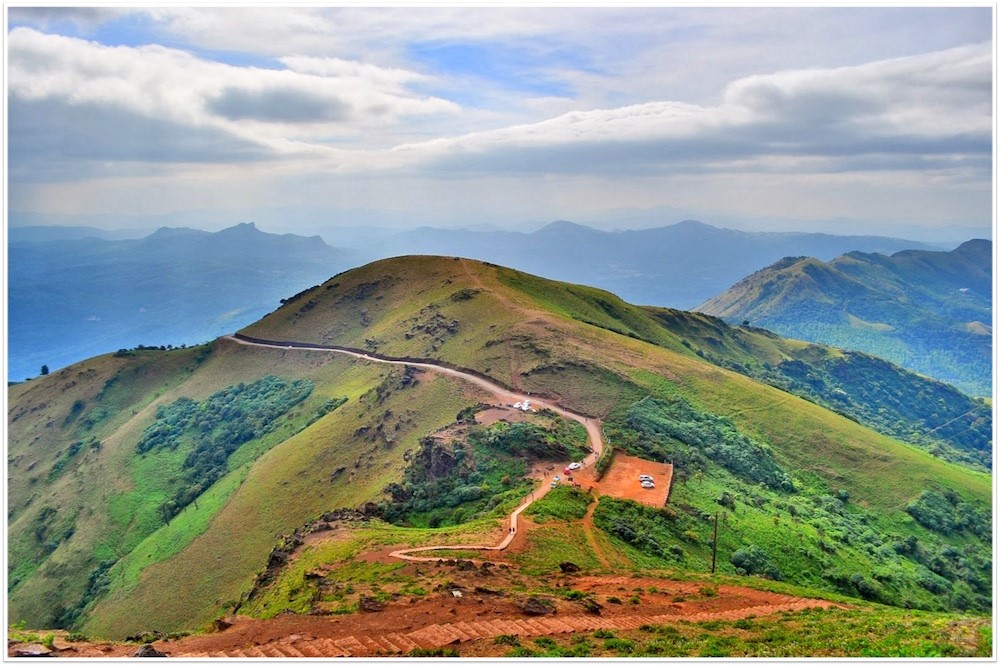
After dinner, overnight journey to Hospet.
Day 5: Hospet – Hampi
Following breakfast, sight-seeing of Hampi.
Virupaksha Temple: The temple is part of the group of monuments at Hampi, designated as a UNESCO World Heritage Site. It is dedicated to Virupaksha, a form of Shiva and was built by Lakkan Dandesha, a nayaka (chieftain) under the ruler Deva Raya II of the Vijayanagara Empire. Hampi, capital of the empire, sits on the banks of the Tungabhadra River. Although it has lost its former grandeur and glory, Virupaksha temple is fully intact and is a significant pilgrimage site. The temple is the main center of pilgrimage here, and has been considered the most sacred, down the centuries.

The towers are 50 meters high and the complex has gateways, shrines, courtyards, pillared pavilion, ante chambers etc. The most interesting part is the inverted pinhole image of its tower present on the inner wall. The temple is dedicated to Shiva, known here as Virupaksha, consort of the local goddess, Pampadevi. Inscriptions date back to the 9th and 10th century. During the period of the Vijayanagara kings, the temple was expanded. More structures and complex were added during the Hoysala and Chalukyan eras, to make it as grand as it looks today. The temple also has its own elephant. The best time to visit is during the festival, held in December and February.
Visitng hours: Open all days 9:00 am to 1:00 pm & 5:00 pm to 9:00 pm
Entry fee: Free
Approximate visit duration: 3 hours
Daroji Bear Sanctuary: Located about 15 km from Hampi; the bear sanctuary was created exclusively for preservation of the Indian sloth bear. It covers more than 82.72 sq km area and was declared as a sanctuary in 1994. The most interesting part is that a narrow pathway with thick forests on both sides that leads to the observatory tower from where one can watch the bears. The landscape includes boulders, stones and dense vegetation. Wild fruit bearing trees have been planted for the bears here along with orchards of mango, custard apple and other trees. Apart from bears, other forms of wildlife that can be seen are leopards, hyena, and jackals. One can also see 90 species of birds, including peafowl and pangolin.

Visiting hours:Open all days 6:00 am to 6:00 pm
Entry fee: Domestic Adult: 50, Foreigner: 300, Rs 500 per car
Fees for foreigners, cameras fees and other charges if applicable.
Approximate visit duration: 2 to 3 hours
Overnight stay at Hospet
Day 6: Hampi
Following breakfast, leave for sight-seeing.in Hampi.
Vijaya Vittala Temple: The temple is dedicated to Vittala, an aspect of Vishnu. With its extravagant architecture and exceptional craftsmanship, it is the main attraction of Hampi. Words fail to explain the elegance, grandeur and splendour of the temple. The sprawling campus resembles a town featuring halls, gateway towers, pillared pavilions and compound wall.
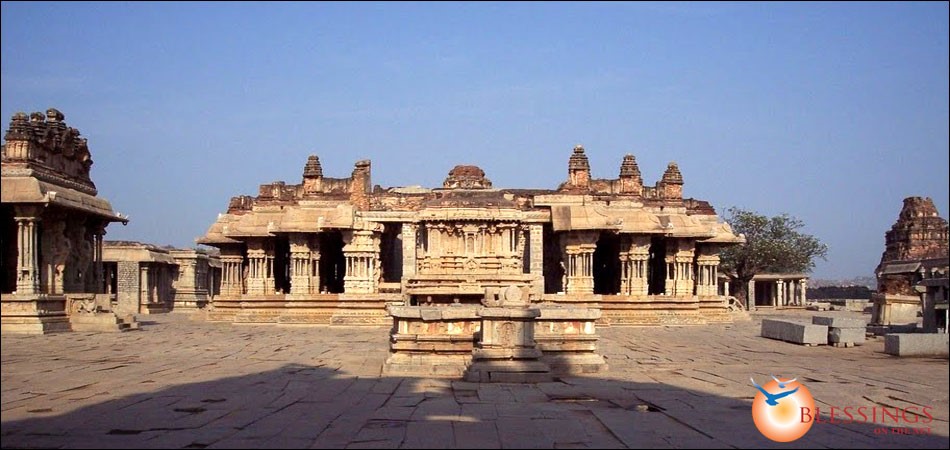
The front of the temple features a stone chariot, which is one of the three famous chariots in India. It is actually a shrine dedicated to the eagle god, Garuda. The main hall opens out to the mahamandapam, which has the most fascinating and famous part of the temple—the musical pillars. Carved out of a single rock, each of the massive pillars emits a different musical tone. The pillars were damaged by the British, who cut them open to check out what was responsible for producing the sound. The temple also has spectacular carvings and sculptures. A must-see for history buffs and architecture lovers.
Visiting hours: Open all days 8:30 am to 5:00 pm
Entry fee: Free
Approximate visit duration for: 3 to 4 hours
Archaeological Museum, Hampi: It is the first museum established by the Archeological Survey of India. Consisting of four galleries, it houses a collection of sculptures and artefacts. The exhibits are manifold, including the elegant replicas of Krishnadevaraya, most famed ruler of the Vijayanagara dynasty, and his queens, greeting visitors at the entrance. The museum beautifully captures the history of Hampi with sculptures of deities, metal objects of religious importance, gold and silver coins from the Vijaynagara era and more. It is popular among history buffs.
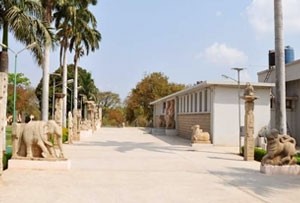
Visiting hours: Open all days 10:00 am to 5:00 pm
Entry fee: Adult: Rs. 5
Fees for foreigners, cameras and other charges if applicable.
Approximate visit duration: 2 to 3 hours
Bellary Fort: Located on top of Bellary Gudda in Bellary, the fort was built in two parts. The Upper Fort was built by Hanumappa Nayaka during the time of the Vijayanagara Empire and the Lower fort was built by Hyder Ali, in the latter part of the 18th century. After the forts were completed, Haider Ali found that they built were at a lower elevation vis-a-vis an opposite hill called the ‘Kumbara Gudda’, thus putting the new structures militarily at a strategic disadvantage. As a result, he was annoyed and it is said that he ordered hanging of the French engineer.

The French engineer’s grave, dated 1769 (inscribed as ‘Unknown French Engineer’), is located at the east gate of the fort and has been preserved due to efforts of local Muslims who also claim that it was the tomb of a Muslim saint. The forts have fine ramparts with a rich history with several historical and religious monuments. A citadel was in the upper fort with several ancient tanks while the lower fort on the east housed the arsenal.
Entry fee: Adult: 20/-; Child: 10/-; Foreigner: 100/-; Foreign Student: 100/-.
Fees for camera and other charges if applicable.
Approximate visit duration: 2 to 3 hours
After dinner drive to Bangalore.
Overnight journey by luxury bus.
Day 7: Bangalore
On reaching in the morning check into the hotel. After freshening up, proceed to visit the following places:
Vidhana Soudha: One of the most famous landmarks of Bangalore, the Vidhana Soudha (or Sabha) houses the State Legislature and Secretariat. The magnificent white building is spread over 60 acres of land, constructed in a style sometimes described as Mysore Neo-Dravidian, In essence, it is a secular structure which reflects a blend of British, Dravidian and Indo-Islamic architecture. It is also the largest legislative building in India. Its origin dates back to the time of Kengal Hanumanthaiah, Chief Minister from 1951 to 1956. His idea was to make it a symbol of legislative sovereignty in the same manner as the House of Commons in London. The foundation of the building was laid by Pandit Nehru on 13th July, 1951. It was completed in 1956 at the total cost of Rs. 1.75 crore. One of the main attractions is the lighting up, every Sunday evening.
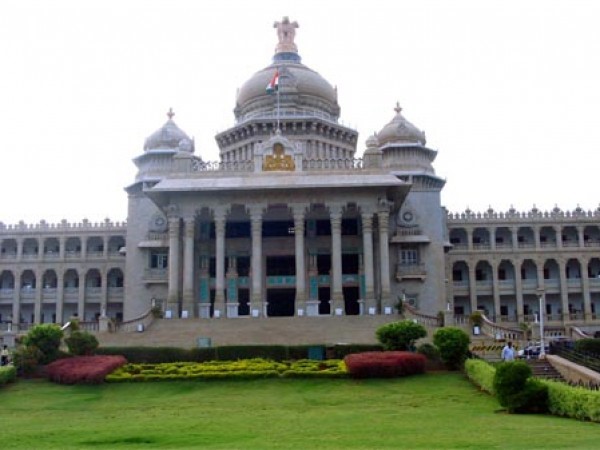
Visvesvaraya Industrial and Technological Museum: VITM is a constituent unit of the National Council of Science Museums (NCSM), Ministry of Culture, Government of India, and was established in memory of Bharat Ratna, Sir M Visvesvaraya. The building, with a built up area of 43,000 sq ft, was constructed in Cubbon Park. It houses various scientific experiments and exhibits, and was inaugurated by Jawaharlal Nehru, on 14 July 1962. The first gallery, on the theme of electricity, was opened to the public on 27 July 1965.
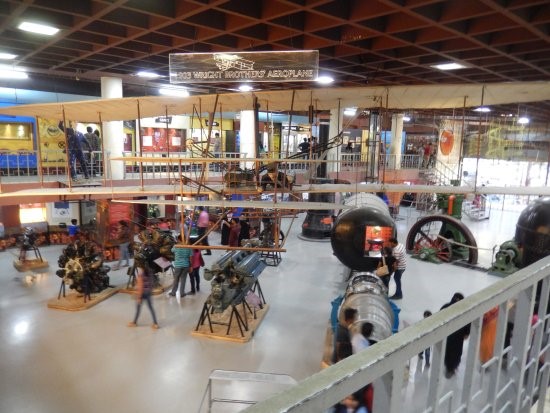
The various galleries, halls and exhibits include: Engines, Electronics, Electro Technic, Wright Brothers, How Things Work, Fun Science, and Science for Children, Dinosaur Alive, Biotechnological Revolution, Science on a Sphere and Space – Emerging Technology in the Service of Mankind. In addition, the museum houses a Science Show hall, 3D theatre, 250-seat auditorium, telemedicine facility and 11′ Celestron telescope with GPS.
Cubbon Park: The Park, officially known as Sri. Chamarajendra Park, is a historic one, located in the heart of city. It was basically designed as a public park in an area of about 100 acres and expanded over the years. The park has a predominant green area with a few concrete buildings, housing government offices and other organizations. Besides several motorable roads, it has well laid out walking paths. At the same time, it aims at protecting the environment and greenery. Cubbon Park is a major lung space of Bangalore and a hot spot for early morning walkers; as also naturalists who study plants in the serene natural environment.

Visiting hours: The Park is open at all times. It has been declared a silent zone between 5.00 a.m. and 8.00 a.m.
Overnight stay at Bangalore
Day 08: Bangalore Departure
After breakfast check out from the hotel and we will drop you at the Bangalore Railway Station to board your train for your hometown.
